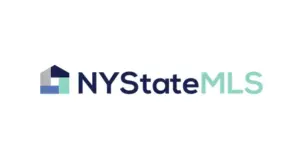Building a real estate site with WordPress feels simple at the start. Install a theme, add an IDX plug-in, and hit publish. Then listings pop up, and leads trickle in. The catch comes when you work in more than one Multiple Listing Service.
The moment your site starts working across multiple boards, the rules change. Each MLS has its standards for data sharing, display formats, refresh timing, and compliance. If you’re not anticipating these regional differences, your clean launch can quickly become a mess of bugs, inconsistencies, and frustrated clients.
Understanding IDX in a WordPress Environment
IDX, short for Internet Data Exchange, is the data bridge that powers real estate listing content on most agent and brokerage websites. It’s how your site pulls active MLS listings and presents them to users. The National Association of REALTORS® (NAR) defines the national policy that makes IDX possible, but your local MLS is the one that controls what data gets shared and how it’s displayed.
In a WordPress setup, IDX feeds are typically integrated through specialized plug-ins such as IMPress for IDX Broker or Showcase IDX. These plug-ins are designed to ingest raw MLS data, wrap it in shortcodes or WordPress blocks, and present it in a way that blends visually with your site’s theme.
Most premium IDX plug-ins also include essential marketing tools, like:
- Built-in lead capture forms to convert visitors
- Interactive property maps that enhance browsing
- Automatically generated sitemaps to improve search engine visibility
However, these plug-ins are not simply cosmetic. Behind the interface, they must comply with a complex set of data and display rules unique to each MLS.
That includes controlling which data fields appear, how often listings refresh, and what disclaimers are included on the page. Failing to comply with these regulations can result in warnings, fines, or even having your data feed shut off. As a developer or consultant, you must be fluent in NAR-level rules and the hyper-specific guidelines enforced by each regional MLS.
Opt-In vs. Opt-Out MLS Models
MLSs differ in how they participate in IDX feeds, and knowing which model applies in your service area is crucial to planning a compliant and fully functional website.
- Opt-in boards require that brokers submit written consent before their listings are included in the IDX feed. This is a more controlled approach, but it often results in fewer listings on the site at launch.
- Opt-out boards, by contrast, include all listings by default unless a broker requests explicit exclusion. This usually results in fuller property inventory, but it increases your responsibility to ensure sensitive or restricted data is handled correctly.
If your WordPress site connects to multiple MLS, it’s essential to map out which boards use which model.
Field Variability: What You Can Show Depends on the Feed
Not every MLS sends the same data fields. There can be dramatic differences from one region to another regarding what information you’re allowed to display. One city might provide sold price history and school district details, while another completely omits those fields — or even hides bedroom counts on specific luxury properties. If a field isn’t present in the data feed, your IDX plug-in won’t be able to show it.
The best way to manage these inconsistencies is to prepare in advance. Export a sample of the feed from each MLS you’ll connect to during setup. Compare the available fields and identify a core group that overlaps — typically, this includes price, beds, baths, square footage, images, and map coordinates. Use those fields to build your base template.
Once the essentials are set, you can selectively layer in advanced or region-specific features only where the data allows. Most quality IDX plug-ins offer conditional display controls, which let you hide fields if they’re blank or unavailable — a vital feature for maintaining a clean, professional layout across all listings.
Media Limits: One Feed Might Allow 50 Photos, Another Just 15
Like field variability, MLSs also differ in how much media content they allow per listing. Some boards permit up to 50 photos, while others cap it at 15. If your WordPress site assumes a fixed gallery size, you risk having broken layouts or blank image spaces.
To prevent that, your image galleries should be coded to loop through however many images are included — no more, no less. Video support is also inconsistent. Some MLSs allow embedded video links (like YouTube), while others strip them out during processing.
When that happens, your template should fall back gracefully, ideally displaying a message like: “Request a walk-through video from the agent.” This small UX detail prevents layout issues and can spark engagement from potential leads.
Refresh Speed Shapes User Trust
Buyers expect listings to be up-to-date. If they see outdated prices or sold homes still marked as available, their trust erodes quickly. That’s why the speed at which your site syncs with the MLS feed matters more than most developers realize.
MLSs tend to fall into three refresh categories:
- Fast (under 5 minutes) — Boards like Bright MLS and CRMLS offer nearly real-time syncing for vendors with direct access.
- Moderate (15–30 minutes) — This is the most common refresh interval and is typically sufficient for most real estate sites.
- Slow (hourly or daily) — This is more typical of smaller or rural boards that batch data overnight.
If you combine feeds from different sources, displaying a “Last Updated” timestamp on listing pages can help manage user expectations. On the backend, use transient caching and smart prefetching during low-traffic periods to improve load times. Still, no optimization beats having a native connection via RETS or RESO Web API, which offers the best sync speeds and long-term scalability.
Local Display Rules Go Beyond Aesthetics
MLS boards care about more than what data is shown—they care about how it’s styled, structured, and ordered on the page. Some require that the brokerage name be displayed above the listing price. Others may demand that a copyright disclaimer appear beneath every image. In some markets, sellers can even opt out of publicly displaying their street address.
Most WordPress themes don’t automatically account for these micro-level rules. Plug-ins like MlsImport are designed to handle many of these automatically, but if you’re customizing your layout, you need to be cautious. The safest approach is to retain the default plug-in wrapper and modify styling via CSS or WordPress hooks.
If deeper customization is needed, work within a child theme and use functions like wp_footer to inject disclaimers that appear sitewide. Keep a detailed changelog during development, as MLS audits may occur months later.
Accessibility: Often Overlooked, Always Important
Although the ADA doesn’t explicitly mention IDX, courts have interpreted WCAG accessibility guidelines as applying to real estate websites, especially when listing data is involved.
To stay compliant (and professional), make sure your site:
- Includes alt text for every listing photo — if it’s missing, generate fallback text using the listing description
- Labels interactive map elements for screen readers
- Preserves disclaimer content on printed pages via custom print stylesheets
These accessibility updates aren’t just about avoiding lawsuits — they also help with SEO and create a better experience for all users, including mobile and low-vision audiences.
Feed Access and Costs: Set Expectations Early
Some MLS boards limit who can request a data feed. Often, access is granted only to the broker of record, and agents must either share that feed or pay for a separate vendor connection. Other boards allow individual agent access if the brokerage has signed a blanket approval agreement.
Costs vary depending on the board and technical infrastructure. MLSs using RESO Web API often charge less because it lowers server load, while older systems may pass on higher fees to cover manual support.
Platforms like IMPress allow for shared data streams with separate agent branding, which helps simplify setup and billing. Ensure data fees are included in your project proposal — it’s always better to be transparent upfront than to face confusion (or friction) after launch.
Picking the Right Plug-In
Not all IDX plug-ins are created equal. Before committing to one, confirm that it supports your target MLSs. Most vendors maintain an online coverage map or use up-to-date comparison lists.
Once you’ve verified compatibility, dig deeper:
- How fast is the sync for your specific MLS?
- Does the plug-in use native WordPress styling or embed listings via iframe?
- Will your listing pages remain live if the feed is paused?
- Does it offer SEO tools like XML sitemaps and server-side rendering?
Solutions like our MLS IDX plugin shine here — they’re built to blend into WordPress, prioritize SEO, and avoid iframe limitations.
Table of Contents






